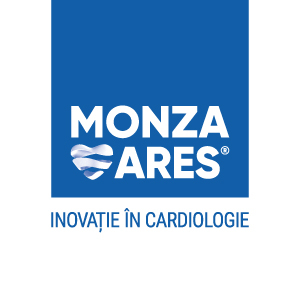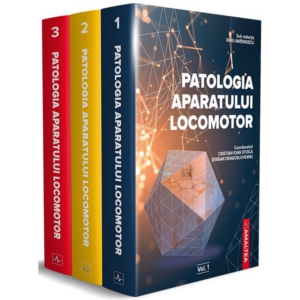Organ donation and transplantation represent the highlight of modern medicine, offering life-saving opportunities for patients with end-stage organ failure. However, this field faces the dual challenges of increased waiting list mortality rates and a stark imbalance between available organs and the recipients in need.
The Importance of Donor Optimization
The cornerstone management strategies essential for donor optimisation, include correcting hypovolemia, ensuring organ perfusion, treating diabetes insipidus promptly, utilising corticosteroid therapy, and applying lung protective ventilation techniques. These interventions arise from a blend of pathophysiological insights and practices extrapolated from the management of general critical care patients. Despite their widespread application, a significant gap remains in the high-quality evidence base, particularly concerning the effects of these interventions on post-transplant function, graft survival, and recipient survival. This gap underscores an urgent need for targeted research to critically assess and refine donor management practices.(1)
The optimization of organ donors within the Intensive Care Unit (ICU) is a multifaceted process aimed at maximizing the quality and viability of organs for transplantation. This crucial aspect of transplant medicine encompasses several specific measures designed to stabilize the donor, mitigate organ injury, and ensure that organs are in the best possible condition for transplant.(2)
Correcting Hypovolemia
One of the initial steps in donor optimization involves correcting hypovolemia. This is essential for maintaining adequate blood flow and organ perfusion, which are critical for the health of transplantable organs. Hypovolemia, if left unaddressed, can lead to decreased organ perfusion and increased risk of organ injury. Fluid resuscitation with isotonic crystalloids, such as 0.9% saline or Ringer’s lactate solution, is recommended to restore euvolemia, ensuring that organs are adequately nourished and oxygenated.(3)
Maintaining Organ Perfusion
Closely related to correcting hypovolemia is the maintenance of organ perfusion. This involves the careful management of the donor’s hemodynamics to ensure that all organs receive sufficient blood flow. The use of vasopressors, such as dopamine and noradrenaline, has traditionally been employed to support blood pressure and maintain perfusion. However, the review notes a shift towards the use of vasopressin due to its dual role in counteracting vasoplegia and treating diabetes insipidus, thus supporting organ perfusion and water balance.(4)
Treatment of Diabetes Insipidus
Prompt diagnosis and management of diabetes insipidus are crucial in donor optimization. Diabetes insipidus, a common condition in brain-dead donors, can lead to significant diuresis, electrolyte imbalances, and hypovolemia, all of which are detrimental to organ preservation. The administration of desmopressin, a synthetic analogue of vasopressin, is recommended to mitigate the effects of diabetes insipidus by reducing urine output and helping to maintain fluid balance.(5)
Corticosteroid Therapy
The administration of high-dose corticosteroids, such as methylprednisolone, is another key measure in donor optimization. Corticosteroids help attenuate the systemic inflammatory response triggered by brain death, potentially reducing organ injury and improving the viability of transplantable organs. Despite the routine use of corticosteroids in donor management, the review highlights the need for high-quality evidence to better understand their impact on transplantation outcomes.(6)
Lung Protective Ventilation
For lung donors, specifically, the application of lung-protective ventilation strategies is a critical component of donor optimization. These strategies include the use of lower tidal volumes, maintaining optimal plateau pressures, and applying positive end-expiratory pressure (PEEP) to prevent ventilator-induced lung injury and preserve lung function. Such ventilatory management is vital for ensuring that the lungs remain suitable for transplantation.(7)
Thyroid Hormone Replacement
Thyroid hormone replacement in brain-dead potential organ donors is discussed with a focus on its potential to correct the „sick euthyroid syndrome” commonly observed in this group. Although brain-dead donors may exhibit a functioning thyroid, prolonged or severe hypothyroidism can impair cardiac performance, potentially affecting organ viability for transplantation. However, the current guidelines in the UK no longer include thyroid hormone replacement as a standard part of donor management. Observational data have suggested an association between thyroid hormone replacement therapy and an increased number of procured organs, yet these findings have not been consistently replicated in randomized controlled trials (RCTs). A systematic review cited within the document indicates that thyroid hormone replacement therapy does not affect donor cardiac index, though the trials included were small and involved donors with haemodynamic instability. (8)
Management of Hypothermia
The management of temperature in brain-dead donors is crucial, with active warming measures recommended to maintain a temperature above 35 °C. This approach aims to avoid the adverse effects associated with hypothermia, such as impaired myocardial contractility, acidosis, and coagulopathy. Interestingly, a study by Niemann et al. showed that mild therapeutic hypothermia (34–35 °C), compared to normothermia (36.5 °C–37.5 °C), significantly reduced the rate of delayed graft function among kidney transplant recipients. However, it is noted that there are no published results regarding the impact of this practice on long-term outcomes. As such, while mild hypothermia has been found beneficial in the short term, its long-term effects on transplant outcomes remain to be fully elucidated.(9)
Future Directions and Challenges
The future points towards the potential for innovative therapeutic opportunities arising from an improved understanding of the physiological changes following brain death. Specifically, it calls for research into the immunological and metabolic alterations in donors, which could lead to novel strategies for increasing organ utilization. However, the path to such advancements is fraught with ethical, logistical, and legal challenges, especially in establishing a robust donor management research program. Addressing these challenges requires careful consideration of the ethical implications of research on deceased donors, the logistical hurdles of conducting large-scale clinical trials in this domain, and the legal frameworks governing organ donation and research.(10, 11)
A Call for Evidence-Based Interventions
Perhaps the most compelling aspect is a call for evidence-based interventions that transcend beyond mere physiological stabilization, a research agenda that not only seeks to mitigate organ injury but also promotes repair and regeneration before organ retrieval. (11) The potential for such research to enhance the quality of donated organs and improve transplant outcomes is immense, but it necessitates a collaborative effort from the medical community, ethical bodies, and legal authorities.
The future belongs to targeted, evidence-based interventions to become a reality, leading to improved outcomes for transplant recipients and a more effective and respectful utilization of the generous gifts of organ donors.
References
- Bera KD, Shah A, English MR, Harvey D, Ploeg RJ. Optimisation of the organ donor and effects on transplanted organs: a narrative review on current practice and future directions. Anaesthesia. 2020;75(9):1191-1204.
- van Erp AC,van Dullemen LFA,Ploeg RJ,Leuvenink HGD.Systematic review on the treatment of deceased organ donors. Transplant Reviews.2018; 32: 194–206.
- Al-Khafaji A, Elder M, Lebovitz DJ, et al. Protocolized fluid therapy in brain-dead donors: the multicenter randomized MOnIToR trial. Intensive Care Medicine 2015; 41: 418–26.
- Joannidis M, Druml W, Forni LG, et al. Prevention of acute kidney injury and protection of renal function in the intensive care unit: update 2017: expert opinion of the Working Group on Prevention, AKI section, European Society of Intensive Care Medicine. Intensive Care Medicine 2017; 43: 730–49.
- Garrahy A, Moran C, Thompson CJ. Diagnosis and management of central diabetes insipidus in adults. Clinical Endocrinology (Oxford) 2019; 90: 23–30..
- Sun Y, Bai L, Niu X, et al. Elevated serum levels of inflammation-related cytokines in mild traumatic brain injury are associated with cognitive performance. Frontiers in Neurology 2019; 10: 1120.
- Griffiths MJD, McAuley DF, Perkins GD, et al. Guidelines on the management of acute respiratory distress syndrome. British Medical Journal Open Respiratory Research 2019; 6: e000420.
- Macdonald PS, Aneman A, Bhonagiri D, et al. A systematic review and meta-analysis of clinical trials of thyroid hormone administration to brain dead potential organ donors. Critical Care Medicine 2012; 40: 1635–44.
- Niemann CU, Feiner J, Swain S, et al. Therapeutic hypothermia in deceased organ donors and kidney-graft function. New England Journal of Medicine 2015; 373: 405–14.
- Jawitz OK, Raman V, Barac YD, et al. Influence of donor brain death duration on outcomes following heart transplantation: a United Network for Organ Sharing Registry analysis. Journal of Thoracic and Cardiovascular Surgery 2019; 159: 1345–53
- Wilcox ME, Ely EW. Challenges in conducting long-term outcomes studies in critical care. Current Opinion in Critical Care 2019; 25: 473–88
 Șef Lucrări Dr. Alexandra Lazăr
Șef Lucrări Dr. Alexandra Lazăr



